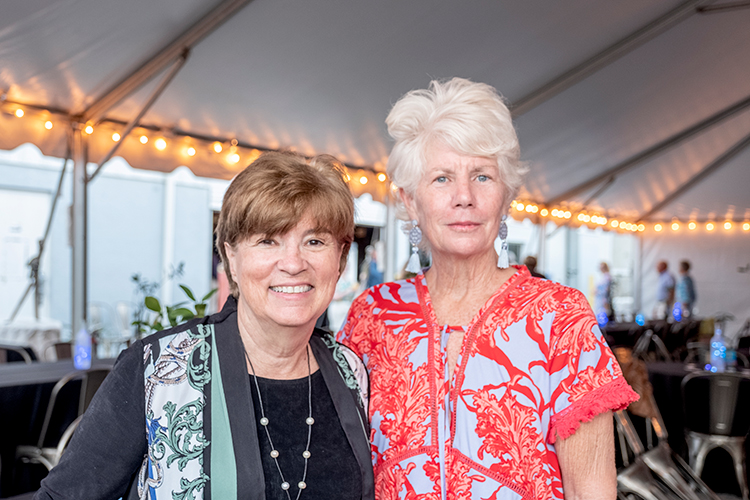The Ocean Research & Conservation Association took supporters on a deep dive into the hidden depths of the ocean during the recent ORCA Explorer’s Experience at the home of Triton Submarines.
It was the perfect setting for the ORCA fundraiser, amidst what Edith (Edie) Widder, Ph.D., ORCA founder, CEO and senior scientist, noted was probably the largest number of submersibles brought together in the history of the planet.
“We’ve explored so little of our ocean planet,” said Widder, explaining that only some .05 percent of the ocean has been studied.
“You need platforms like these in order to do the kind of exploration that we need to have done now more than at any time in human history,” she said, referencing the variably sized submersibles in the facility.
Quoting Madam Curie, Widder said, “‘Nothing in life is to be feared, it is only to be understood.’ Now is the time for us to understand more so that we may fear less. We need explorers now more than at any time in human history, and I believe you’re standing at the forefront of the new age of exploration. It’s a huge deal, and Triton is on the cutting edge.”
Widder and Patrick Lahey, president of Triton Submarines, first met at Harbor Branch Oceanographic Institute. Their paths would cross again in 2012, when Widder was part of a team of scientists who captured a video of a giant squid for the very first time – in a Triton sub.
“Edie is somebody that we’re big fans of at Triton Submarines. She’s the closest thing we get to a celebrity in the ocean space. The things that she’s accomplished in her career are nothing short of legendary,” said Lahey.
“We’re very fortunate to have somebody like her that has taken an interest in the ocean and has had such an illustrious and important career.”
Lahey, who said he had been motivated to build the submersibles because of his love of the ocean, shared some of the subs’ history and capabilities.
“These machines really do allow us to visit the most interesting, most exciting part of our world, and Triton has had an interesting 17-year trajectory,” said Lahey.
During that time, Triton has produced 25 subs, including one that has made 20 dives to full ocean depths of almost 36,000 feet and, he said, is the deepest diving sub ever.
Widder noted that 2022 was quite a busy year for ORCA.
The nonprofit has been successfully tracking algal blooms with Kent State University using Kilroy water quality monitoring systems placed in the Indian River Lagoon, and they have produced a highly advanced pollution map.
Additionally, 1,300 Citizen Scientists have put in 7,000 hours in field and laboratory work and more than 13,000 students participated in the annual ‘A Day in the Life of the Lagoon,’ along a 156-mile stretch of the Indian River Lagoon.
Still other students competed in an inaugural ORCA Data Jam that challenged them to devise creative and artistic ways to display real science datasets collected by ORCA citizen scientists.
Finally, ORCA will move into their new headquarters, the D.J. Rainone Research and Science Building, later this year, named in honor of the late son of ORCA board member Trudie Rainone, whose estate made a substantial contribution to the capital campaign.
Before dinner, guests had the opportunity to bid on auction and raffle items, explore the subs, chat with members of the Triton crew and learn about how the slow eyes of deep-sea animals see the world around them.
For more information, visit TeamORCA.org.
Photos by Joshua Kodis

